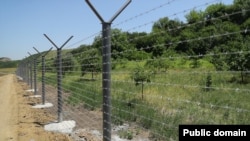The court dominated by judges installed by Prime Minister Nikol Pashinian’s administration ruled that it does not contradict the Armenian constitution.
The Armenian government is now expected to send the agreement to the National Assembly for ratification. The parliament controlled by Prime Minister Nikol Pashinian’s party will almost certainly endorse it.
The deal signed on August 30 involves “regulations” for joint activities of Armenian and Azerbaijani government commissions dealing with the border delimitation process. It says that the process will be based on the 1991 Alma-Ata Declaration in which newly independent ex-Soviet republics recognized each other’s Soviet-era borders.
The 7-point document says at the same time that the two sides will not follow the declaration championed by Yerevan if a possible peace agreement between them “provides for other regulations.”
The six other articles of the agreed regulations are short on specifics. They do not specify which maps, if any, will be used by the sides.
Pashinian has touted the regulations as a “significant positive change of the situation.” He said on August 31 that Baku and Yerevan have yet to agree on which sections of the border will be delimited first and when. The publicized document says nothing about that sequence.
Armenian opposition lawmakers have seized upon this fact to assert that the deal will not prevent Azerbaijan from demanding more Armenian territorial concessions. They say that Baku will agree to delimit only those sections of the long border where it could make further territorial gains dangerous for Armenia’s national security.
The lack of certainty over the maps is another cause for concern for the two opposition alliances represented in the Armenian parliament. Their representatives said earlier this week that they will vote against the ratification of the regulations.
The border agreement was signed more than four months after Pashinian’s government controversially agreed to cede four disputed border areas to Azerbaijan. The unilateral land transfer sparked massive anti-government demonstrations in Yerevan in May and June.
The areas handed over to Azerbaijan had been occupied by Armenian forces in 1991-1992. For its part, the Azerbaijani army occupied at the time large swathes of nearby land belonging to several villages in Armenia’s northern Tavush province. It has not withdrawn from that land in return for the Armenian concessions. Azerbaijan has also refused to withdraw from Armenian border areas seized by its troops in 2021 and 2022.
Incidentally, unlike the Armenian side, Baku has still not publicized the regulations. Also, it is not clear when Azerbaijani lawmakers could ratify them.




